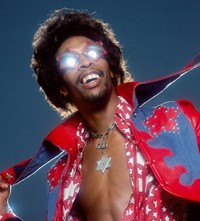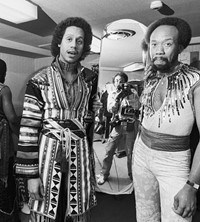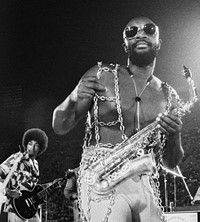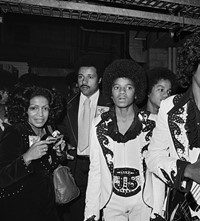A new book published by Taschen chronicles the work of Bruce W. Talamon, who photographed everyone from Donna Summer to Michael Jackson during the height of the Soul Train era
- TextMiss Rosen
As staff photographer at SOUL Newspaper during the 1970s, Los Angeles native Bruce W. Talamon knew the score: “always respect the artist and don’t fuck up the vibe. Always be on top of your game, and take any chance you can”. These lessons served him well documenting artists such as the Jackson Five, Parliament-Funkadelic, Donna Summer, James Brown, and Marvin Gaye; the legendary soul, funk, and R&B acts of the 1970s that turned pop music into an unforgettable trip on the Soul Train.
Every Saturday morning, kids and teens across the United States tuned into Don Cornelius’ dance extravaganza. In the decade before video killed the radio star, the sound of Black America hit the high bar as artists like Al Green, Bootsy Collins, and Rick James burned up the stage. After they turned off the TV they hungered for more; more photos and stories about their heroes. So, they read SOUL.
Talamon jumped on the scene, quite literally, when he walked on stage at Wattstax to photograph Isaac Hayes in 1972 – unaccredited. The young photographer had picked up a camera the year before, and decided to forgo his studies as a law student for something entirely different – something no one in the mainstream media was covering in any depth. It is fortunate that he did; as without Talamon, there would be no photograph of Maurice White of Earth, Wind & Fire walking with a white umbrella towards the Great Pyramids of Giza. Now, in his new book published by Taschen and titled Bruce W. Talamon. Soul. R&B. Funk. Photographs 1972–1982, the artist takes us back to this pivotal era in history, when glamour, grandeur, and grooves reigned supreme.
“I wanted the book to show not only the bright moments but the quiet moments too. It had to have the costume fittings. It had have Soul Train. Somebody said, ‘Well, you had an agenda.’ Yes, I did. There has never been a photo book done on R&B, soul, or funk music. This is the first one ever. I was one of the few photographers continually shooting these acts. I’m the only guy that’s got an archive like this. I knew who would be out there photographing, and so often I was out there by myself. I looked at it as being the keep of Black folks’ history, our music. I love the idea of the visual record.”
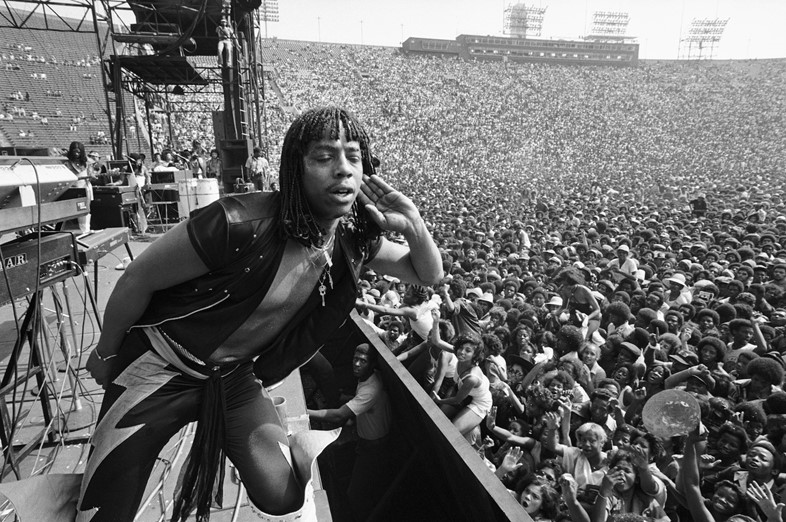
“I fell in with a group of people who were of like-minded thought at SOUL Newspaper. What founder and editor Regina Jones did was empower a young group of African-American writers and photographers. I was a freelancer, a contract photographer, but I acted like that was my office. It was like my second home.”
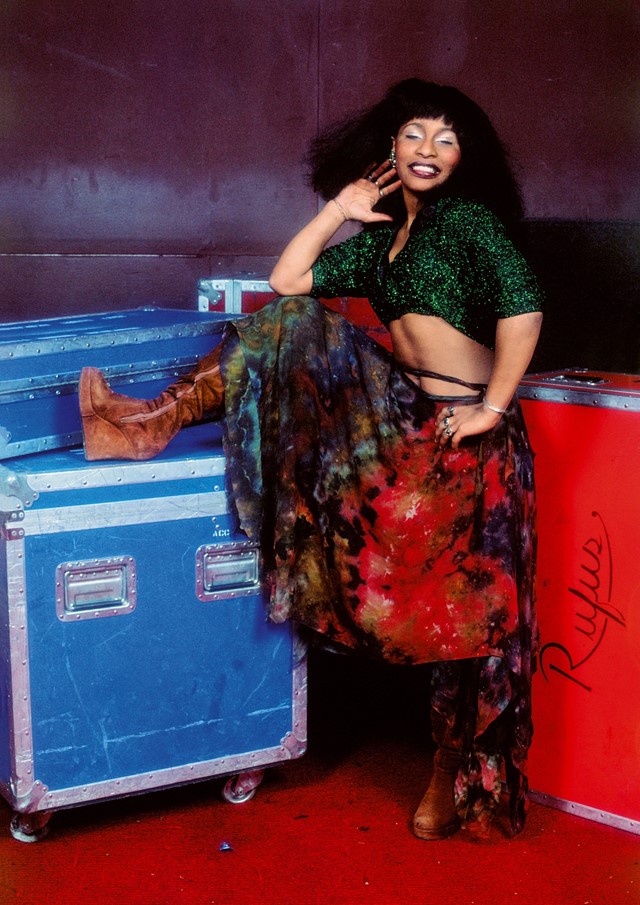
“I remembered a lot but then there were moments I forgot until I saw the pictures again – like one of the early times I photographed the Jackson Five at the Inglewood Forum. I have a wonderful shot of Michael, Jermaine, and Marlon, and they’re on the side of the stage looking up and listening to the Ohio Players and they are just burning the set down. Michael is looking and I know he is calculating: ‘What do we have to do to whip their ass?’ He was just a little boy then but he was a performer and he knew. When the Jackson Five came on they took it to the next level. And I have a photo of them coming off stage, that moment they are shell shocked getting inside the limo. You see how much the artist has to give.”

“My access was incredible. Nobody ever asked me to put my camera down. That’s how I could get that shot of Al Green collapsing at the stage door because I wanted to show what the artist had to give. It’s not fabulous all the time. They work. James Brown was 70 still doing splits as if he was Prince because that’s the work ethic those cats had. I like to say it’s a time that lasted way beyond the midnight hour and it will never come again – and I had the best seat in the house.”

Bruce W. Talamon. Soul. R&B. Funk. Photographs 1972–1982 is out now published by Taschen.
